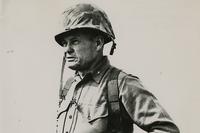Spencer Clark is probably the most obscure American ever to appear on U.S. banknotes, and there are a surprising number of people (officially, 53) who've been featured on things like legal tender, silver certificates, Federal Reserve notes and, of course, your everyday currency notes. They include presidents of the United States, treasury secretaries, generals and even one former enemy of the state.
In general, the people honored with appearing on American legal tender have done a lot in their lives, either related to banking or to the ongoing security of the country, to deserve being immortalized on currency. Then there's Clark, an artist and engraver, who pretty much just saw a great opportunity.
Clark, like many Americans at the time, held a number of jobs and started a few businesses before going into his forever career, which turned out to be government work. He was 45 when he started clerking at the Treasury Department in 1856. He eventually worked his way into finishing new currency and monetary notes, working in engraving and printing new currency. By 1862, he was the first superintendent of the National Currency Bureau, a precursor to the Bureau of Engraving and Printing.
As Clark was organizing the new printing and engraving office for American money, the country was in the full throes of the Civil War. The material demands of the war meant that considerably less metal was available for creating new coins, and the American public wasn't giving up their old coins, which were made of precious metals at the time. Congress decided it would allow the Department of the Treasury to start printing fractional currency notes as a stopgap solution.
The new notes were available in three-, five-, 10-, 15-, 25- and 50-cent denominations and were issued five times throughout the war. Deciding whose image to put on American currency is a big deal, but during the Civil War, it clearly wasn't the biggest issue of the day. The U.S. government had a lot going on, which meant mistakes were bound to be made.

In June 1864, the country was ready to produce its third round of fractional dollar notes. Congress decided it would honor William Clark, who famously explored the Louisiana Purchase with Meriwether Lewis between 1804 and 1806. But when Congress passed the bill to memorialize William Clark, the language of the bill only read "Clark."
It's important to note that Spencer Clark wasn't a very popular guy in the federal government. The official history of the Bureau of Engraving and Printing records that Clark would later resign "amidst a congressional investigation into record-keeping and security." Representatives in Congress had accused Clark of hiring only attractive women and plying them "with oysters and ale to make improper overtures to them."
The record also alleges that Clark paid the women up to $1,000 (almost $20,000 in 2023 dollars) to spend the night with him. The subtle accusation is that the money came from the treasury, not Clark's bank account. He was eventually cleared of the charges when one of the women who testified that she'd slept with him died and her autopsy revealed she'd died a virgin.
In truth, Clark was hiring women whose fathers or husbands had been wounded or killed in the ongoing war. He hired some 300 women to help provide for those affected families, but the air of controversy never really left Clark (and it certainly didn't help the women working at the Treasury Department).
So he really wasn't doing himself any favors when he'd decided the congressional order to immortalize "Clark" on the upcoming five-cent note could be applied to himself: Spencer Clark. Until that time, three Americans had been featured on paper bills while they were still living. These included President Abraham Lincoln; Lincoln's treasury secretary, Salmon P. Chase; and Gen. Winfield Scott.
So when Clark put himself on the five-cent note, you can probably understand why Congress was upset. The new notes appeared in 1866, and featured not only Clark, but also Treasurer of the United States Francis E. Spinner on the 50-cent note. With the war over, Congress had time to pay attention to what the Bureau of Engraving and Printing was up to.

When it came time to pass an appropriations bill for the Treasury Department, Rep. Martin Thayer of Pennsylvania added an amendment that codified who exactly could be put on American banknotes: "Hereafter no portrait or likeness of any living person shall be engraved or placed upon any of the bonds, securities, notes, or postal currency of the United States."
Spencer Clark kept his job at the treasury due to the intervention of Representative (and later President) James Garfield, Secretary Chase and Treasurer Spinner, but the faces on American currency would be forever limited to dead people.
-- Blake Stilwell can be reached at blake.stilwell@military.com. He can also be found on Facebook, X or LinkedIn.
Want to Learn More About Military Life?
Whether you're thinking of joining the military, looking for post-military careers or keeping up with military life and benefits, Military.com has you covered. Subscribe to Military.com to have military news, updates and resources delivered directly to your inbox.















